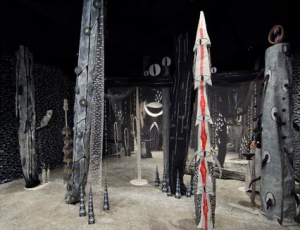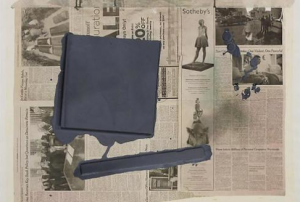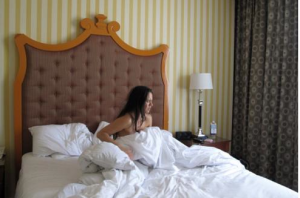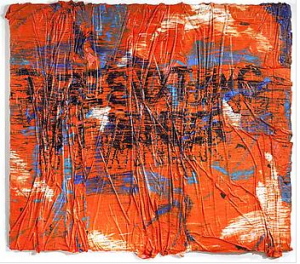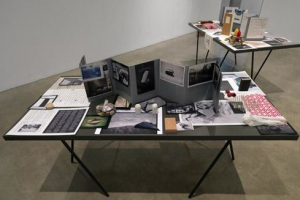
In his New York gallery debut, British artist Tris Vonna-Michell explores the stories of little-known historical figures (an East German border guard, a forgotten concrete poet) in a group of distinct but linked installations that collect, sift and reconfigure information to create intriguing, and charmingly quixotic, alternative histories. Despite deliberately low-tech, low-key visuals—slide shows of bleak urban scenes, displays of texts on tables and shelves—the artist’s soundtrack of urgently delivered word streams provides an irresistible hook.
In the darkened front gallery, a voice speaks pressingly about magnetic tapes, tanks and Russians, while a projector slowly flashes images of the former no-man’s-land near the Berlin Wall. Texts spell out the story of a young soldier canonized by the East German state for being shot by defectors escaping west in 1962, but the actual details are left untold because, as the piece suggests, truth was subsumed by official legend long ago.
Elsewhere, Vonna-Michell tells of his not entirely successful attempt to track down an obscure French avant-garde poet, Henri Chopin (a former neighbor), and also recalls the 1989 mass demonstrations around Stasi headquarters in Leipzig, as nervous authorities shredded incriminating files inside. Seamlessly segueing from their frantic efforts to destroy records to Kurt Schwitters’s collage technique, Vonna-Michell demonstrates that while none of us may ever completely know the past, it can be engaged, at least, on one’s own terms.
Originally published in Time Out New York, issue 832, October 13-19, 2011.
